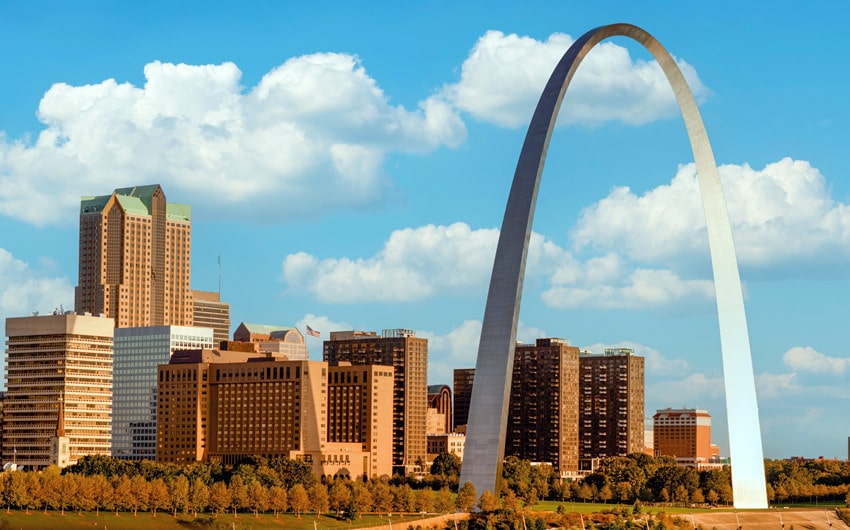Why St. Louis Feels Like Home
A City Steeped in Story and Soul
Ask anyone who’s lived in St. Louis for more than a few months, and they’ll likely describe it the same way: big enough to explore, small enough to feel familiar. Tucked along the banks of the Mississippi River, this historic Midwestern city offers a balance of charm, culture, and opportunity that continues to surprise newcomers. Whether you’re moving for work, family, or a change of pace, St. Louis has a way of making people feel welcome without demanding that they give up comfort, space, or affordability to enjoy urban life.
This isn’t just a place with famous monuments and baseball legacy—though those are part of the fabric too. What makes St. Louis magnetic is its slower rhythm, its architectural soul, and the depth of its communities. You’ll find city neighborhoods with red brick homes and tree-lined sidewalks that look like they’ve stood still in time, and yet right around the corner, new breweries, galleries, and coffee roasters breathe life into every block.
Affordable Living Without the Tradeoffs
One of the biggest reasons people choose to move to St. Louis is the cost of living. Compared to other cities of similar size, St. Louis offers more house for your money, more green space, and shorter commutes. You can live downtown in a renovated loft or find a historic home in neighborhoods like Tower Grove or Lafayette Square, all while spending far less than you would in cities like Chicago, Denver, or Austin.
But affordability doesn’t mean compromise. It often means freedom—the ability to own a home, raise a family, or invest in hobbies or personal growth. It means having the room to breathe and the space to think clearly about what matters most. For young professionals, remote workers, or growing families, that’s more than appealing—it’s practical.
A City That Honors Its Past While Shaping the Future
St. Louis isn’t afraid of its roots. It wears its history on its sleeve, whether through preserved French Colonial architecture, the cobblestone streets of Laclede’s Landing, or the legacy of the 1904 World’s Fair. But while the past is visible, it doesn’t hold the city back. Innovation is a growing part of St. Louis’ identity.
Biotech and startup hubs have flourished, particularly in areas like Cortex Innovation District, drawing talent and investment from across the country. Educational and healthcare institutions, including Washington University and Barnes-Jewish Hospital, continue to attract researchers, students, and professionals. And with these anchors come new restaurants, bike trails, public art, and expanded transit—efforts that make city living more vibrant and accessible.
The juxtaposition of old and new gives St. Louis its flavor. It’s not trying to reinvent itself with every trend, but it is quietly reshaping the way people experience community and opportunity.
Nature, Neighborhoods, and Leisure at Your Doorstep
For those who enjoy being outdoors, St. Louis offers a great experience. Forest Park, larger than New York’s Central Park, serves as the city’s recreational heart. Inside its borders, you’ll find museums, gardens, a zoo, and plenty of walking and biking paths. Across the city, neighborhood parks, local farmers markets, and nature trails offer quiet retreats from the buzz of daily life.
Many homes in the area come with yards or patios, and given the Midwest’s hot summers, outdoor upgrades are becoming a common investment. That’s where inground pools in St. Louis come into play. More homeowners are choosing to create backyard sanctuaries where they can unwind, entertain, or spend time with their kids. Inground pools aren’t just about luxury—they’re about lifestyle, especially when designed to fit seamlessly into the natural rhythm of a St. Louis summer. While the city isn’t coastal, the popularity of private outdoor spaces makes it easy to enjoy resort-like relaxation right at home.
A Tapestry of Cultures and Community Connections
What truly rounds out life in St. Louis is its people. The city’s cultural richness is reflected in everything from its music—rooted in blues and jazz—to its food scene, which mixes barbecue joints, Bosnian bakeries, and Italian delis into one unforgettable menu. The city is home to an array of festivals, parades, and events that celebrate heritage and creativity, from the vibrant Mardi Gras in Soulard to Shakespeare in the Park during summer evenings.
And most importantly, St. Louis has a strong sense of identity. Ask anyone where they went to high school, and you’ll quickly learn that locals take pride in their personal geography. While that question might seem odd to outsiders, it reflects how interconnected the city’s communities are. People know each other here. Neighborhoods feel more like extended families. Whether you’re born in St. Louis or newly arrived, there’s space to build relationships and put down roots.
A Place for Real Life to Happen
St. Louis isn’t trying to sell you a fantasy. It doesn’t lure you with artificial gloss or endless hustle. What it offers instead is a grounded, livable city where people can work, raise children, retire, or reinvent themselves. It’s a place where things cost what they should, where culture and history exist on every block, and where neighbors tend to linger on their porches in the evening.
There’s a quiet confidence to the city—an understanding that it doesn’t need to be like anywhere else to be special. For many who move here, that’s the point. They’re looking for a place that’s steady but not boring, welcoming but not overwhelming, unique but still down-to-earth.
St. Louis may not top every list, but for those who make the move, it has a way of becoming the only place that feels like home.







